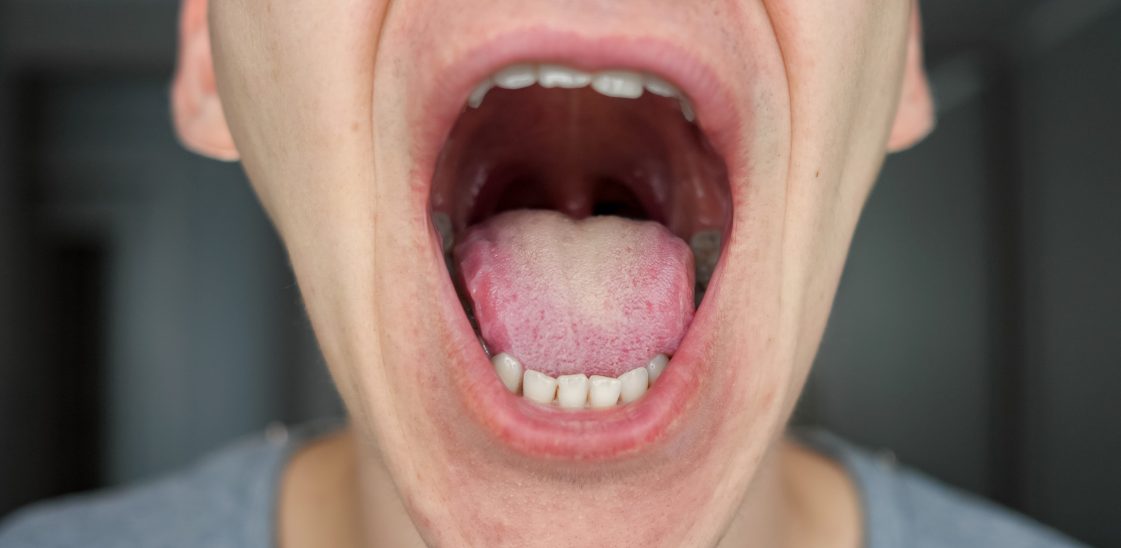
What should your tonsils look like?
Your tonsils are part of your immune system’s first line of defence. They are thought to help to protect against infection by trapping bacteria and viruses that you breathe in, stopping these germs from entering your respiratory and digestive tracts, and producing antibodies to kill them.
However, the tonsils themselves can become infected. So that you can spot the signs of infection early, it’s a good idea to know how your tonsils usually look and how they might appear when infected. In this post, we show you what healthy tonsils look like and explore some of the signs of infection.
What do normal tonsils look like?
To locate your tonsils, open your mouth, stick out your tongue and say ‘ahh’. Use a mirror and a handheld torch to help you. You should be able to see two oval-shaped soft tissues masses on each side of the rear of your throat. These are your tonsils.
Healthy tonsils will be roughly the same size as one another and pink in colour like the area around them.
Of course, like all parts of the body, natural variations can occur so your tonsils may not look quite the same as someone else’s. That’s why it’s good to be familiar with what’s normal for you.
What do swollen tonsils look like?
Swollen tonsils can be a sign of a cold or flu, or a symptom of tonsillitis, which is an infection of the tonsils. If you have tonsillitis, one or more of your tonsils may appear bigger than usual. They may also be red in colour.
If you’re suffering from tonsillitis, you may have other symptoms, such as:
- a sore throat
- difficulty swallowing
- a high temperature
- a cough
- headache
- nausea
With viral tonsillitis, you can expect to feel better in about 3 to 4 days. To relieve your symptoms, you should get lots of rest, sip cool drinks, take paracetamol or ibuprofen, and gargle with salt water (adults only). Sucking on throat lozenges can also help to soothe your throat pain[1].
If your tonsillitis does not clear up on its own, it may be caused by a bacterial infection like strep throat. This type of tonsillitis may require antibiotic treatment[2].
What are the white spots on my tonsils?
White puss-filled spots on your tonsils can also be a symptom of tonsillitis.
Alternatively, they can be a sign of tonsil stones, also known as tonsilloliths. Tonsil stones form when debris, such as bacteria, gets trapped in the crevices of the tonsils and calcifies into small, hard, rock-like structures.
If you have tonsil stones, you may experience a range of other symptoms, including:
- bad breath
- an unpleasant taste in your mouth
- a sore throat
- discomfort or difficulty swallowing
- a cough
If your tonsil stones are small and aren’t causing you too much discomfort, you may be able to get rid of them at home by gargling with warm, salty water, by shooting water at the back of the mouth with a syringe or irrigation kit, or by using a sterile cotton swab to gently scrape them so that they become dislodged.
If the stones are larger or more troublesome, you may require antibiotics. In some cases, they may need to be surgically removed by a doctor. If tonsil stones become a persistent problem, the removal of your tonsils, also known as a tonsillectomy, may be required to resolve the problem. Alternatively, you may be treated with cryptolysis – this involves laser treatment to flatten the surface of the tonsils[3].
Why do I have holes in my tonsils?
Holes in the tonsils, which are also referred to as tonsil crypts, are small crevices, folds, or pockets in the surface of the tonsils. They can be a perfectly normal part of your anatomy. Some people naturally have more holes in their tonsils than others.
However, if you have holes in your tonsils, you may be more prone to infection. This is because food, germs, and other debris can get stuck in the crevices, causing infection or tonsil stones. To keep your tonsils free from debris, you should practise good oral hygiene and examine your tonsils regularly for signs of accumulation.
While tonsils are there to protect us, unfortunately, they can cause trouble from time to time. Being able to spot the signs of infection can help you to resolve any issues early so it pays to be familiar with this part of your anatomy. If you have concerns about your tonsils, you should seek advice from a qualified medical professional.
Resources:
[1] https://www.nhs.uk/conditions/tonsillitis/
[2] https://www.nhs.uk/conditions/strep-a/
[3] https://apps.nhslothian.scot/refhelp/guidelines/entadult/throat/tonsillectomy/tonsilstonesadults/
